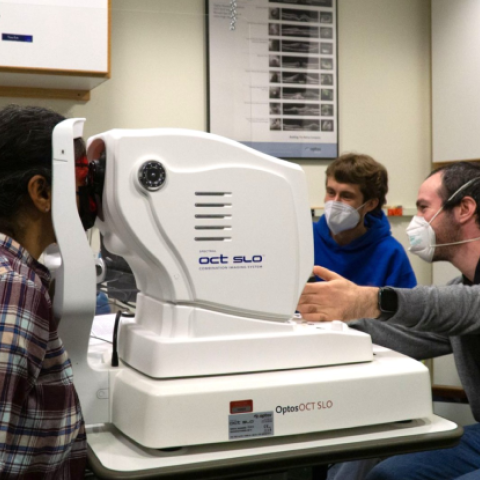
- Principal Investigator:
- Laura Walker
In normal eye-hand coordination, the retinal reference frame plays a crucial role in guiding movements. The fovea is the center, or “zero” in this reference frame, and it shifts to center an object in the frame just prior to a reaching movement. When vision is lost in the fovea and a PRL develops – how does eye-hand coordination change? Does the hand still move with the non-functioning fovea or does it reorient to the PRL? Is there a cost in spatial accuracy or response latencies as a result of this shift? With healthy vision, orienting the fovea to an object location improves the accuracy and precision of a rapid point, even in the absence of visual feedback. Is the same true for maculopathy patients at the PRL? In this aim, we take a principled, experimental approach to these questions by conducting reaching experiments in which the eye is allowed to move. How does the eye-hand coordination change when the PRL is used to localize an object during a rapid reach? Pilot data with scotoma subjects suggest that the foveal location still exerts a signal that impacts the saccade and reach accuracies, and that adaptation of the PRL as the center of the retinal reference frame is incomplete.

